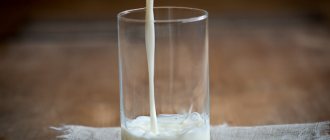The benefits of oatmeal
Properly prepared porridge brings undeniable benefits to the body not only of the woman, but also of the child during breastfeeding.
For nursing mother
This product improves the functioning of the digestive tract of women whose risk of developing constipation increases during pregnancy. In addition, the risk of developing gastrointestinal diseases is reduced.
With regular use, hormonal levels improve, resistance to stress increases and blood sugar levels normalize. Oatmeal helps reduce appetite for a long time, which helps fight excess weight.
For a newborn
The product contains a large amount of vitamins and microelements that promote rapid and complete growth. The child’s body is charged with energy for a long time.
When the mother regularly consumes oatmeal, hemoglobin levels increase and the functioning of the nervous system in children improves.
Does the baby have enough milk?
When there is little milk during breastfeeding, it is clearly noticeable. The breast does not fill, the child is nervous, tugging at the nipple. Then the whole family begins to think about how to increase lactation for a nursing mother. However, quite often there is a situation when a lot of fluid is released from the breast, only the nursing mother’s milk resembles water. There is no sense in eating such food, but increased gas formation and other problems for infants can be fully achieved.
You can determine that increased lactation is necessary based on the following signs:
- Weight. This development indicator is one of the main ones. There are many tables that young parents can use to navigate and determine whether the milk flow is sufficient or whether measures need to be taken to restore natural processes.
- Frequency and volume of urination. The flow of breast milk must be increased if in the first months emptying occurs less than 10-12 times per day.
- Chair. Here the opinions of doctors differ. Some pediatricians recommend increasing milk production with liquid stool, and some with thick stool.

When can it be added to the diet?
Due to the gluten content, its use may be limited, especially during the first month of life. This is associated with a high risk of developing allergies.
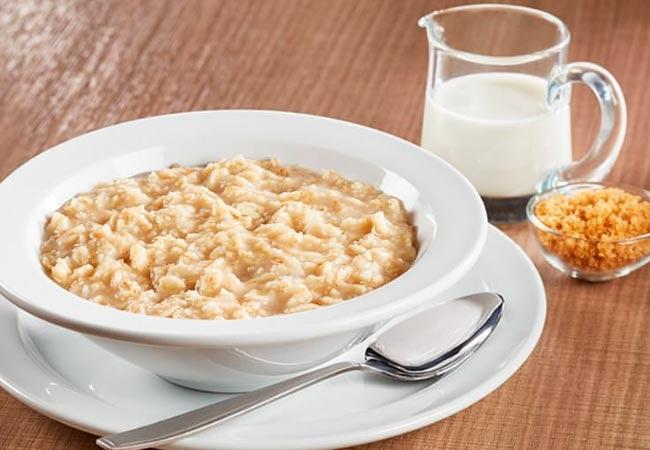
Oatmeal on water
Oatmeal with water is allowed to be introduced into the diet starting from three to four months after the birth of the child. At the same time, it is necessary to regularly monitor his well-being and, if symptoms of atopic dermatitis appear, it is necessary to limit the consumption of the product for some time.
What cereals can you eat after childbirth: list
During the postpartum period, there is a pronounced weakening of immune forces. Nutrition is aimed at replenishing expended resources, and it is selected taking into account the possible negative impact on the child’s body. The selected diet should be hypoallergenic and exclude the development of intestinal colic.
Porridges are universal dishes that are recommended for women. Among them, the most commonly used are:
- Buckwheat. It is approved for use immediately after childbirth, since, despite the large amount of vitamins and minerals, as well as iron, it rarely causes an allergic reaction.
- Corn grits (in small flakes). This product is gluten-free, so it is recommended to include it in the diet in the early postpartum period.
- Rice. The product does not contain gluten, but its consumption increases the risk of side effects. Therefore, to prevent complications, it is included in the diet no earlier than 4 months.
- Millet cereal. Cooked porridge prevents the development of constipation. It is recommended to include it in a woman’s diet starting from three months of pregnancy.
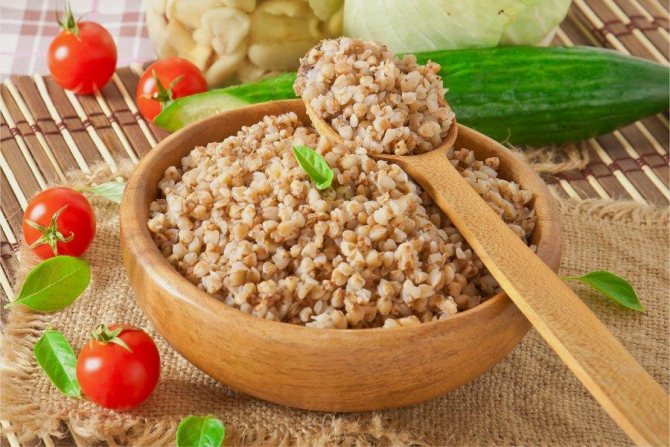
Possible harm from eating oatmeal during breastfeeding
Oatmeal, like any product, can exhibit its negative qualities. They are taken into account before use. The most common are:
- Contains gluten. This plant protein can lead to the development of problems with the digestive function.
- Development of an allergic reaction in a child. When you start consuming oatmeal early, the protein it contains acts as an allergen.
- The appearance of diseases of the gastrointestinal tract.
Who is strictly contraindicated from eating
Oatmeal should be introduced into the diet with caution, having previously ruled out any contraindications. Among them are:
- A history of an allergic reaction to the product in the mother and a tendency to diathesis in the child.
- The presence of celiac disease, which is accompanied by the development of digestive disorders due to the inability to break down gluten.
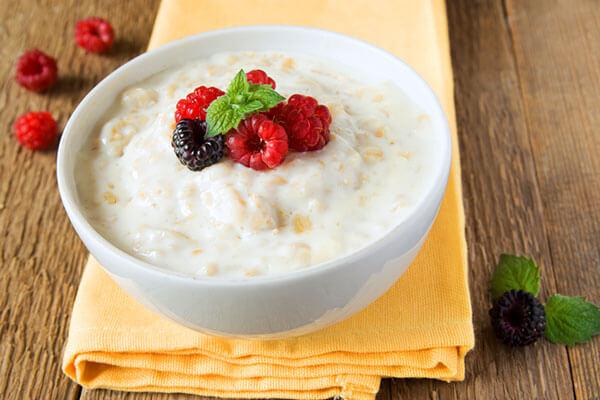
Benefits of oatmeal
Everyone knows that this product is an integral part of the English breakfast, but not everyone understands the true value of oatmeal porridge. The nutrients contained in this product provide energy not only to the young mother, but also to the newborn baby.
Natural oat flakes contain the following substances:
- pantothenic acid;
- riboflavin;
- retinol;
- thiamine;
- folic acid;
- choline;
- tocopherol;
- niacin;
- phylloquinol;
- ascorbic acid.

This product contains nickel, calcium, potassium, sulfur. Each of these components is very important for the full development of a newborn baby who is breastfed.
Natural oatmeal contains complex carbohydrates that create a feeling of fullness. This allows a nursing woman to give up sweets and flour products, which contribute to excess weight gain. Read more about permitted sweets while breastfeeding here.
If a young mother suffers from diabetes, then this dish will allow her to regulate blood glucose levels. Regular consumption of this product has a beneficial effect on the condition of tooth enamel, musculoskeletal system, skin and hair.

The increased content of plant fiber in this product has a beneficial effect on intestinal motility, which is important if a nursing mother suffers from constipation. The vitamins and antioxidants contained in oatmeal stimulate the immune system of a young mother, and also increase the body’s overall resistance to infectious and non-infectious diseases of organs and systems.
Can children eat it?
In a baby’s diet, cereals are one of the first foods; they are introduced to the baby immediately after vegetable purees, but there are exceptions when complementary feeding (as prescribed by the pediatrician) begins with porridge. Oatmeal is considered one of the most healthy, and mandatory in the diet of children under one year of age and older (in the absence of allergies).
At what age should it be included in complementary foods?
For the first 6 months, doctors around the world advise feeding the baby only breast milk or a special adapted infant formula. In the second half of the year, it is worth starting to accustom your baby to adult food, i.e. introduce complementary foods. Baby can be introduced to oatmeal at the age of 7-8 months .
Benefits for the child
In order for porridge to have a beneficial effect on the baby’s growing body, it should be consumed in the morning for breakfast.
- Hercules is an excellent source of carbohydrates.
- Potassium and magnesium have a positive effect on the full functioning of the heart muscle, nervous and respiratory systems.
- Phosphorus and calcium remove toxins from the body and promote the normal development of the musculoskeletal system.
- Iron prevents anemia.
- B vitamins (B1, B2 and B5) - are involved in almost all vital processes of the body, have a positive effect on children's skin and on digestive processes.
- Fiber regulates the gastrointestinal tract. Acts like a mild laxative.
- Antioxidants - increase the body's immunity from negative external factors.
- Amino acids are responsible for the activity of the baby’s endocrine system.
ATTENTION ! The nutrients contained in this product provide energy not only to the young mother, but also to the newborn baby.
Selection rules
When choosing oatmeal, it is recommended to pay attention to a product that is made in its pure form and does not contain additional components or flavoring additives. Whole oat grains have the greatest value. The only drawback in this case is the length of time it takes to prepare porridge from whole oats.
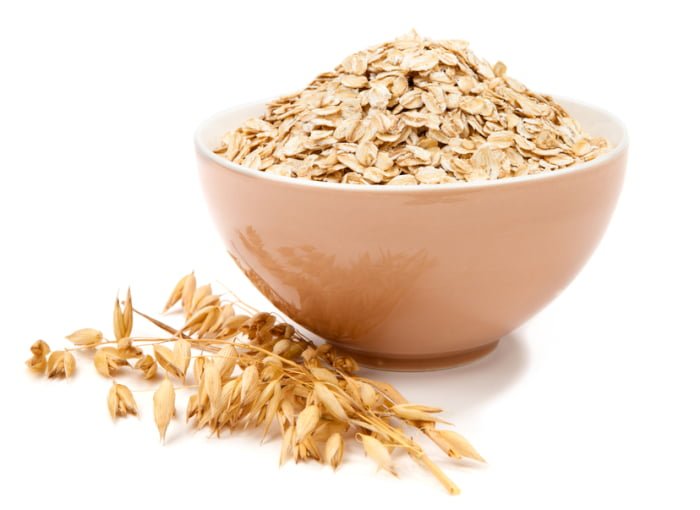
If a nursing mother does not have time, then she is recommended to pay attention to oatmeal flakes. In retail outlets, this product is called Extra or Hercules. The product is also classified according to flake size. The cooking time for oatmeal porridge is no more than 15 minutes.
How to increase milk supply while breastfeeding?
The first thing you need to understand is that milk production depends on how often you put your baby to the breast. When a baby suckles at the breast, it irritates the nerve endings in the nipples and sends a signal to the brain that the baby needs some more milk. Therefore, if you feel that the baby does not have enough milk, put the baby to the breast more often. However, frequent breastfeeding may not help milk production if the mother's nutrition is very poor or completely incorrect. Therefore, the second thing you should pay attention to when breastfeeding your baby is the food you eat.
How to cook porridge
Even the preparation of this simple dish requires compliance with special rules.

In order for the dish to be tasty and retain all the useful components, the young mother must adhere to the following recommendations:
- First of all, it is recommended to thoroughly rinse the purchased product. This will remove excess flour from the cereal.
- During lactation, it is recommended to prepare porridge from oatmeal in water. Cow's milk protein often causes allergies in a newborn baby.
- The specified amount of water must be brought to a boil and add oatmeal. Next, sugar is added to taste and the porridge is cooked over low heat for 10-15 minutes. It is recommended to stir the dish constantly.
- When the dish is ready, it is recommended to add a little butter or olive oil. This will give the porridge a rich taste and smell. To improve the taste, the porridge is covered with a lid and kept for 5-10 minutes.
ethnoscience
There are also ways to improve lactation in folk recipes. So, a proven method for increasing the amount of milk is a mixture of cumin and sour cream. A pinch of spice is ground, poured with sour cream, left for an hour, then brought to a boil over low heat. Take a spoon three times a day.
Those who want to know how to enhance lactation can try mixing dill, anise and oregano in equal parts. Pour a tablespoon of the mixture into a glass of boiling water and drink a sip up to five times a day.

Traditional healers also advise how to improve lactation through walks in the fresh air, restful sleep and joyful time spent with the child. We restore lactation, mothers, the main thing is the health of the baby.
Now you know why breastfeeding is so important, how to increase the amount of milk and improve its quality. Good health to you and your baby, and if you can’t save milk, don’t despair. Use mixtures, but then give the baby more maternal warmth and love.

Every mother wants to give her child only the best. Nursing mothers are no exception, and when there is not enough milk in her breasts, this causes great concern and leads to stress. And stress, as you know, further aggravates this problem.
In addition to stress, milk supply is also affected by the mother's nutrition; everything you eat during this period is crucial for postpartum recovery and the lactation process. Food also affects the quality of the milk you feed your baby.
The benefits of oatmeal during lactation
If you regularly pamper yourself with oatmeal during breastfeeding, your milk volume will increase. Oatmeal is extremely healthy during breastfeeding; it should become part of a woman’s daily diet! In addition, porridge is a rich source of iron, which is important in the fight against anemia. This pathology can provoke a reduction in the amount of breast milk.
Oatmeal is quick and easy to prepare. You can pour boiling water over it, leave it for a while, and then have breakfast. As for the norm of this dish during lactation, a nursing mother should eat one bowl of hot porridge daily. The only contraindication is individual intolerance. This product should also not be used if you have celiac disease.
Oatmeal is a valuable storehouse of vitamins, microelements, and minerals that are so necessary during breastfeeding.
Oatmeal contains the following valuable components:
- tocopherol;
- choline;
- retinol;
- folic acid;
- thiamine;
- riboflavin;
- ascorbic and pantothenic acid;
- phylloquinone;
- vitamins E, A, K, B;
- calcium, nickel, sulfur and potassium, copper;
- iron, magnesium, fluorine, phosphorus, and manganese.
All of these substances are extremely important not only for a nursing woman, but also for a newborn child.
Porridge can be prepared not only for breakfast, but also for lunch and dinner. Thanks to the slow-release carbohydrates contained in oatmeal, you will feel full for a long time. Oatmeal cooked in water will help you regain your former shape, restore and correct the figure that has changed after pregnancy. If you regularly eat this dish, extra pounds will go away, and the body will be cleansed of toxins.
Cereals contain a large amount of fiber. In turn, it improves the activity of the gastrointestinal tract, normalizes stool and prevents various disorders. You can prevent the development of gastritis and peptic ulcers if you regularly eat oatmeal. A distinctive feature of the cereal is that it contains many antioxidants that fight depression and stress.
Metamorphoses of oatmeal
It should be noted that oatmeal is a very high-calorie product. But the main feature of its calories is the ability to be converted not into fat, but into “long-term” energy: that is why even a small portion of porridge causes a feeling of satiety and retains it for a long time. That is why for a breastfeeding mother trying to stay in her weight category, it is important to eat oatmeal for breakfast every day.
Read also:
What and when can a breastfed mother eat after giving birth?
Thanks to its neutral taste, oatmeal is perhaps the most versatile grain product - it goes well with vegetables, fruits and even meat. Depending on tastes and food preferences, oatmeal porridge is prepared with milk, water, or broth.
Of course, a nursing mother needs to understand that no additives, even the most favorite ones, can mask the taste of disgustingly prepared porridge - and therefore its preparation and the quality of the ingredients should be treated very responsibly:
- Refrain from using cereal purchased (or produced) a long time ago - otherwise the finished porridge will have a rancid taste (which is especially harmful for a nursing mother - the bitterness can be transferred to breast milk);
- During the cooking process, the volume of rolled oats increases 4 times - so a glass of cereal is enough for breakfast for 3 people. The amount of liquid required for cooking depends on the desired consistency of the porridge: 3 cups – liquid, 1 cup – very thick porridge;
- Cooking time always depends on the size and thickness of the flakes - “extra” ones are cooked for no more than 5 minutes, regular ones – about 20.
- Ready-made porridge (even cooked in water) should be stored for no more than a day, always in the refrigerator - then it loses most of its beneficial properties.
The cooking process itself is very simple: pour cold water over the flakes and put on fire. After boiling, reduce the heat: then cook until tender, stirring constantly and skimming off any foam that forms. Cook for 5 to 15 minutes, depending on the type of cereal. By the way, there is no need to rinse them before cooking!!! At the end of cooking, add a small piece of butter (or a teaspoon of vegetable oil), remove from heat, and close with a lid.
When the porridge has cooled a little, you can add to it, to taste: steamed dried apricots, sultanas, prunes, cherries, raspberries, currants. By the way, you can grate an apple, a pear, mash a banana: as you can see, the range of “goodies” that can be added to oatmeal depends on your imagination.
Read also:
All about the benefits and harms of chocolate during breastfeeding
And finally, here’s another interesting recipe...
Cutlets for nursing mothers:
- Pour a glass of oatmeal with 1.5 - 2 glasses of chicken broth (you can also use beef broth), close the lid and let it “steam”;
- Crush 1 clove of garlic (the middle, the hottest, is best removed);
- Add a little salt, 1/2 tablespoon of vegetable oil, chicken egg yolk.
- Mix the mixture thoroughly and form into cutlets. Steam for 20-25 minutes.
Bon appetit, excellent health and no problems with breastfeeding!

